Ross, Robert Alexander (Captain)
Killed in Flying Accident 1976-October-05
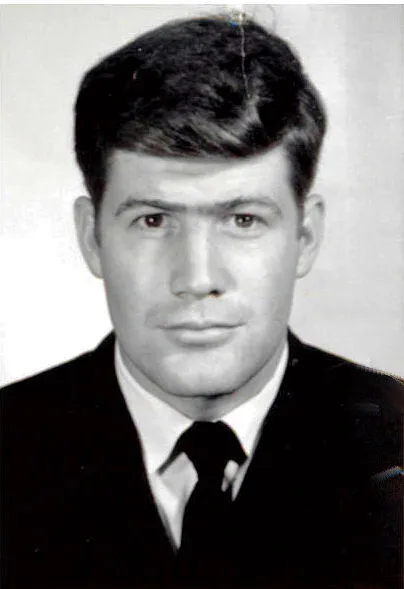

Birth Date: 1947
Born:
Parents: Son of Robert Davis Ross of Thorold, Ontario.
Spouse: Husband of Marilyn Louise (nee Brooks) Ross and father of Alicia and Caren of Dartmouth, Nova Scotia.
Home:
Enlistment:
Enlistment Date: unkown date
Service
RCAF
Unit
406 Sqn- Squadron
We Kill By Night
Base
Rank
Captain
Position
Pilot
Service Numbers
247218
Crew or Other Personnel
Tracker 12182
Tracker serial: 12182
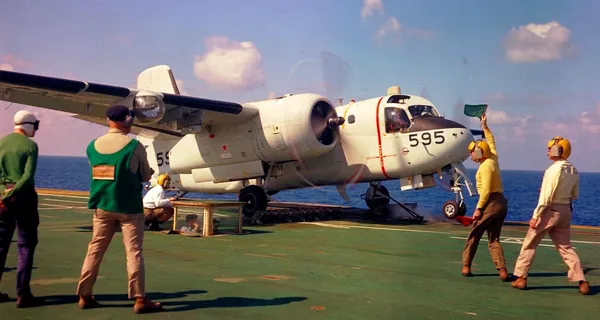
de Havilland Canada (Grumman) CS2F Tracker, RCN (Serial No. 1595), preparing to launch from the deck of HMCS Bonaventure, 1969. Note how the nose wheel is off the deck and how the catapult cable hooks onto the fuselage. This aircraft survived its life at sea and went on to become Conair Turbo Firecat C-FKUF coded "577" in 1992. It was subsequently sold to Securite Civile of France as F-ZBCA coded "T-23"
The Grumman S-2 Tracker (S2F prior to 1962) was the first purpose-built, single airframe anti-submarine warfare (ASW) aircraft to enter service with the United States Navy. Designed and initially built by Grumman, the Tracker was of conventional design – propeller-driven with twin radial engines, a high wing that could be folded for storage on aircraft carriers, and tricycle undercarriage. The type was exported to a number of navies around the world. Introduced in 1952, the Tracker and its E-1 Tracer derivative saw service in the U.S. Navy until the mid-1970s, and its C-1 Trader derivative until the mid-1980s, with a few aircraft remaining in service with other air arms into the 21st century. Argentina and Brazil are the last countries to still use the Tracker.
The Tracker was intended as a replacement for the Grumman AF Guardian, which was the first purpose-built aircraft system for ASW, using two airframes for two versions, one with the detection gear, and the other with the weapon systems. The Tracker combined both functions in one aircraft. Grumman's design (model G-89) was for a large high-wing monoplane with twin Wright Cyclone R-1820 nine cylinder radial engines, a yoke type arrestor hook and a crew of four.
The S2F carried the nickname "Stoof" (S-two-F) throughout its military career.
The Tracker had an internal torpedo bay capable of carrying two lightweight aerial torpedoes or one nuclear depth charge. There were six underwing hard points for rocket pods and conventional depth charges or up to four additional torpedoes. A ventrally-mounted retractable radome for AN/APS-38 radar and a Magnetic Anomaly Detector (MAD) AN/ASQ-8 mounted on an extendable rear mounted boom were also fitted. Early model Trackers had an Electronic Support Measures (ESM) pod mounted dorsally just aft of the front seat overhead hatches and were also fitted with a smoke particle detector or "sniffer" for detecting exhaust particles from diesel-electric submarines running on snorkel. Later S-2s had the sniffer removed and had the ESM antennae moved to four rounded extensions on the wingtips. A 70-million-candlepower searchlight was mounted on the starboard wing. The engine nacelles carried JEZEBEL sonobuoys in the rear (16 in early marks, 32 in the S-2E/G). Early Trackers also carried 60 explosive charges, dispensed ventrally from the rear of the fuselage and used to create sound pulses for semi-active sonar (JULIE) with the AN/AQA-3 and later AQA-4 detection sets, whereas the introduction of active sonobuoys (pingers) and AN/AQA-7 with the S-2G conversion saw these removed. Smoke dispensers were mounted on the port ventral surface of the nacelles in groups of three each.
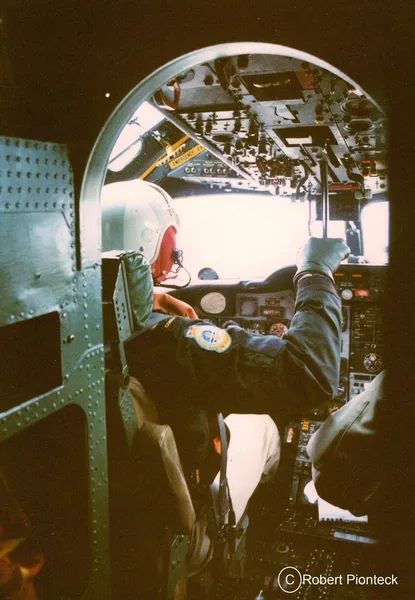
In 1954, de Havilland Canada (DHC) entered into a contract to build Trackers under license to replace the outmoded Grumman TBM-3E Avengers being used by the Royal Canadian Navy (RCN). 99 Trackers were built by DHC, with the first Canadian-built aircraft flying on 31 May 1956. From 1957 onwards, these aircraft operated from the newly deployed aircraft carrier HMCS Bonaventure and various shore bases. All the Canadian Trackers were built to the G-89 model design with a length of 42 feet (13 m). In 1960"“1961, 17 CS2F-1 aircraft, which had been relegated to training and utility duties by the CS2F-2, were transferred to the Royal Netherlands Navy. From 1964, 45 CS2F-2s were upgraded by fitting revised electronic equipment and sensors, becoming CS2F-3s. Also in 1964, a pair of CS2F-1 aircraft were stripped of armament and ASW electronics, converted to transports, and subsequently used for carrier onboard delivery. The CS2F-1, -2, and -3 were redesignated as the CP-121 Mk.1, Mk. 2, and Mk. 3 respectively following the unification of Canadian forces in 1968.
After Bonaventure was decommissioned in 1970, all remaining Canadian Trackers were transferred to shore bases. This limited their usefulness for ASW patrols, and between 1974 and 1981 gradually all but 20 were placed in storage and the remainder were stripped of their ASW gear. The remaining active-duty Trackers served until 1990 on fisheries protection and maritime patrol duties. A handful of Trackers were kept in flying condition until the late 1990s but were no longer used for active service.
DHC obtained a single U.S.-built S2F-1 for manufacturing verification; it was initially given RCN serial number 1500. In 1954, this aircraft was transferred to the RCN for operational testing, and was coded X-500. In 1956, it was upgraded to CS2F-1 standards and assigned serial number 1501, and was used as a stationary instructional airframe at Shearwater until 1972. Wikipedia (with revisions)
Unit Desciption
406 Sqn We Kill By Night ("Lynx")
History of the Squadron during World War II (Aircraft: Blenheim I & IV, Beaufighter IIF & VIF, Mosquito XII & XXX)
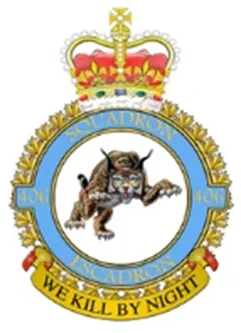
The Squadron was formed at Acklington, Northumberland, UK  on May 10, 1941 as the RCAF's 5th squadron formed overseas, as a night-fighter unit. It flew Blenheim, Beaufighter and Mosquito aircraft in the night air defence of Great Britain role, before being re-designated as an Intruder squadron in November 1944. It was listed as the top scoring RAF/RCAF Intruder unit for the period November 27 1944 until the end of WWII. The squadron was disbanded at Predannack, Cornwall, UK
on May 10, 1941 as the RCAF's 5th squadron formed overseas, as a night-fighter unit. It flew Blenheim, Beaufighter and Mosquito aircraft in the night air defence of Great Britain role, before being re-designated as an Intruder squadron in November 1944. It was listed as the top scoring RAF/RCAF Intruder unit for the period November 27 1944 until the end of WWII. The squadron was disbanded at Predannack, Cornwall, UK  on Sep 1, 1945.
on Sep 1, 1945.
Overall, the squadron claimed 64 enemy aircraft destroyed, 7 probables and 47 damaged. Also claimed were 88 locomotives and many other vehicles. Squadron operational losses were 11 aircraft, 20 aircrew killed or missing and 2 POWs. The squadron personnel were awarded 3 DSOs, 1 second Bar to DFC, 1 Bar to DFC, 14 DFCs, 2 DFMs and 4 Mentioned in Dispatches. Battle Honours were: Defence of Britain 1941-45, English Channel and North Sea 1944, Fortress Europe 1943-44, France and Germany 1944-45: Biscay Ports 1944, Normandy 1944, Rhine: Biscay 1944.Wikipedia, Kostenuk and Griffin
Maps for Movements of 406 Squadron 1941-45

406 Sqn History Summary 1941-45
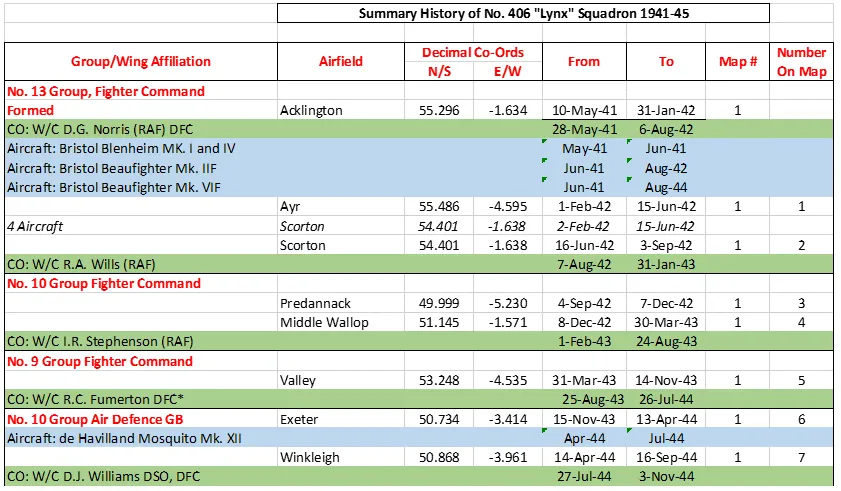
406 Sqn History Summary 1941-45 Page 2

History of the Squadron Post-WWII (Aircraft: Harvard II, Mitchell III, Silver Star, Expeditor, Otter, Sea King, Tracker, Cyclone)
The unit was re-formed as a reserve unit, 406 Tactical Bomber Squadron (Auxiliary) on 1 April 1947 at RCAF Station Saskatoon  . It flew B-25 Mitchell III light bombers, and also Harvard and T-33 Silver Star aircraft for army co-operation duties. It was re-designated 406 (Light Bomber) Squadron on 1 April 1949 and adopted the title City of Saskatoon in September 1952. In March 1958 under the name 406 Squadron, it was re-equipped with C-45 Expeditor and later CSR-123 Otter aircraft, and assigned to a light transport and emergency rescue role. The squadron was disbanded again on 1 April 1964 as a result of the reduction of the Auxiliary Force.
. It flew B-25 Mitchell III light bombers, and also Harvard and T-33 Silver Star aircraft for army co-operation duties. It was re-designated 406 (Light Bomber) Squadron on 1 April 1949 and adopted the title City of Saskatoon in September 1952. In March 1958 under the name 406 Squadron, it was re-equipped with C-45 Expeditor and later CSR-123 Otter aircraft, and assigned to a light transport and emergency rescue role. The squadron was disbanded again on 1 April 1964 as a result of the reduction of the Auxiliary Force.
The squadron was re-formed for a third time at CFB Shearwater, Nova Scotia  on 12 July 1972 as the 406 Maritime Operational Training Squadron, operating the CH-124 Sea King helicopter and the CP-121 Tracker ASW aircraft. In mid-1981, the operational Tracker squadron, 880 Maritime Reconnaissance Squadron, was transferred CFB Summerside, which left 406 Squadron only responsible for Sea King training. At the present time, the squadron trains pilots, Air Combat Systems Officers (ACSOs), and Airborne Electronic Sensor Operators (AES Ops) on the CH-148 Cyclone aircraft and flight operations relevant to the Maritime Helicopter (MH) role. In addition, the Squadron’s Technical Training Flight conducts a wide range of avionics and aviation courses for Cyclone technicians, as well as specialty maintenance courses. On an annual basis, between 200 and 300 students graduate from 406 Squadron. The squadron’s partner squadrons 423 Squadron in Shearwater, N.S., and 443 Squadron in Patricia Bay, B.C., employ 406 Squadron Cyclone graduates as integral members of helicopter air detachments aboard Her Majesty’s Canadian ships.
on 12 July 1972 as the 406 Maritime Operational Training Squadron, operating the CH-124 Sea King helicopter and the CP-121 Tracker ASW aircraft. In mid-1981, the operational Tracker squadron, 880 Maritime Reconnaissance Squadron, was transferred CFB Summerside, which left 406 Squadron only responsible for Sea King training. At the present time, the squadron trains pilots, Air Combat Systems Officers (ACSOs), and Airborne Electronic Sensor Operators (AES Ops) on the CH-148 Cyclone aircraft and flight operations relevant to the Maritime Helicopter (MH) role. In addition, the Squadron’s Technical Training Flight conducts a wide range of avionics and aviation courses for Cyclone technicians, as well as specialty maintenance courses. On an annual basis, between 200 and 300 students graduate from 406 Squadron. The squadron’s partner squadrons 423 Squadron in Shearwater, N.S., and 443 Squadron in Patricia Bay, B.C., employ 406 Squadron Cyclone graduates as integral members of helicopter air detachments aboard Her Majesty’s Canadian ships.